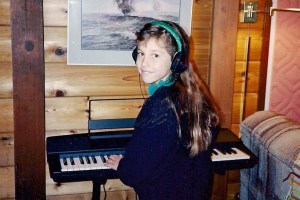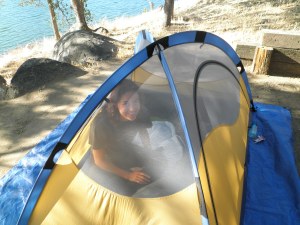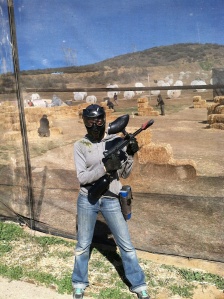As I’ve learned this past year, more than in any other of my past nearly-thirty, life sure can change, even if you thought you had a course plotted out, or at least a very good idea of a course. Things you thought you knew for certain can change dramatically, and you can find yourself in places, with people, doing jobs you may never have envisioned. I guess what they say about the only certainties in life being death and taxes is true–though I suppose you can avoid the latter if you take yourself off the grid and live in a cave. But if you’ve seen The Croods, that idea didn’t work out too well for Grug and his family, as they still couldn’t escape the inevitably of change. I guess what I’m saying is that life throws curve balls, and even living in a cave won’t keep you from them.
Earlier this year I wrote a letter to my ten-year-old self, partly as preparation for this goal, but also because it seemed like a cathartic self-reflective activity. The intention wasn’t to write a list of regrets, but to accept and understand what I’ve learned about myself based on choices I’ve made. Although I enjoyed writing to my younger self, I don’t know that I would truly want that version of me to have known what I know now. Sure, what they say about hindsight is true, but who learns or grows out of perfection?
I didn’t foresee many of the changes that have occurred in the past ten months alone, and if I had written a letter to my thirty-year-old self at the beginning of this 30×30 experiment, I would surely read it in eight weeks and laugh. There is no way to predict, or at this point even take a wild stab at, what will happen in the next twenty years, but I know what I’ve learned so far, and I know what I hope those years will entail. I look forward to reading the following letter (only bits of which are included) to see how much more I will have grown, and to see how many curve balls came my way and what I was able to do with them.
Dear fifty-year-old me,
Happy birthday! Can you believe you are fifty! I can’t! Surely you remember those cards you used to send your family members when you were a kid espousing your incredulity at the fact that each relative was, indeed, that old?. And now you are that old. Or, rather, that young. Despite the trepidation you felt about turning the big three-zero, you have always known that age is just a number; how you feel is what’s most important.
So, here you are, celebrating fifty years of life. And not just life; living. Some of that time was tough, and frustrating, and full of anxiety and apprehension. Some of that time you felt unsure about everything, and that your life had been completely turned upside down and you were rapidly barrel-rolling towards the edge of a cliff.
But you had felt consternation before, like in middle school when you had to select the right color of bands for your braces so it wouldn’t look like you had food stuck in your teeth, or when you had to choose the perfect Halloween outfit that would be fun and unique, yet also keep you warm in that chilly Alaskan weather. As you came to find out, you’d get food stuck in your braces no matter what color the bands were, and the homemade bear costume–accompanied with a mask that looked like a rat’s face–was certainly unique, though maybe not quite in the way you had hoped.
With each difficult time, you were able to find a solution and move on. Sure, maybe what you settled on at the time wasn’t always the best choice, and maybe sometimes it was a downright bad decision, but everything worked out okay and led you to where you are now.
There is no such thing as perfection. It is human to be fallible. No matter how hard you try to make your life perfect, there will always be flaws. Be true to yourself, be kind to others, and be as good of a steward to your environment as you can be. Be grateful for the rough patches, for that’s when you were able to learn and grow more than you thought was possible, and be grateful for your experiences.
You have experienced love, of the deepest, most unconditional, and most forgiving kind, which has shown you that there are people who know you inside and out, and know of your imperfections, and still think the world of you. I hope by now you love yourself as much.
You have experienced heart-rending loss, which has helped you appreciate those you love much more than if you had never felt the pain and anguish of losing people you care about. Loss has also further impressed in your mind how precious and short life is, and that it’s important to express your love and gratitude for people as often as possible.
You have experienced the creation of life-long friendships. The kind where you can go a decade without seeing each other, but the second you meet again, everything is exactly as it always had been. Sure, you have a few more wrinkles, and you desire just a glass or two of wine with dinner—rather than gulping down “duck farts” and other now-horrible-sounding mixes of alcohol out of shot glasses glued to a ski just to get drunk—but you still laugh at the same jokes, talk endlessly about everything under the African night sky, and belt out songs from The Lion King while driving through the savanna on search for wildlife. And yes, just like you did at twenty-seven, at fifty years of age you know that singing is probably the worst way to attract animals, but you’ll continue to do it because it’s fun.
Although your list of must-sees and must-dos will likely—hopefully—be never-ending, you have seen and done more things than many people dream of.
You have traveled across the the world.
You have watched a leopard stalk two impala in the wilds of Kruger National Park, you have watched hyenas pace hungrily while your stew cooked over the campfire and all that separated you from them was a fence, you have watched two behemoth rhinos stroll across the road right in front of your car, you have watched a baby elephant walk so closely behind its mom that surely its trunk was glued to her bum, and you have looked into the black eyes of a great white shark as it rammed the cage you were in that dangled over the side of a boat in the frigid Atlantic Ocean.
You have SCUBA dived the Great Barrier Reef, bungee jumped in Thailand, sky dived in Australia, crawled through a cave in Colombia, wire base-jumped in New Zealand, rappelled off Table Mountain in South Africa, and zip-lined through the jungles of Costa Rica—shortly before a sloth inched its way along the line before alighting in the trees.
You have also set many goals in your life. Some you have far surpassed, and others you have not achieved, which is okay. If you easily accomplish every goal you set, you are not reaching high enough, nor are you giving yourself the opportunity to grow. The moment you stop striving to acquire new knowledge and new skills, or create music and stories–two things you love–your life will become dull. You know a little about what that’s like, and you know it’s not how you want to live. Always aspire to learn more, do more, and be more than you think is possible. Continue to learn from your failings and be grateful for your accomplishments.
Remember when you went one month without saying anything negative about anyone, including yourself? It worked wonders for your outlook on humanity, and self-esteem. You’ve always been great at finding the silver lining in things and putting a positive spin on things that can seem bleak, and you should continue to do it as often as necessary.
Remember when you meditated for thirty minutes a day for a month? You weren’t always able to completely quiet your mind and focus solely on your breathing, but it helped you find an inner calm and peace. Give it another shot in times of stress, which will surely arise again.
Remember when you were a kid how often you laughed so much and so hard that you peed your pants? Of course you do because it comprised a decent amount of your childhood! Always remember those carefree days of your youth, and that it’s okay to be completely and unabashedly out of control sometimes to get the most out of life. You can always buy new britches, but you can never exactly replicate an experience to get more out of it the second time because you held back the first time.
Remember at the age of three when you slipped your feet into your very first pair of ski boots, clicked into your bindings, and schussed down the double black diamond run smoothly and flawlessly? Of course you don’t; it didn’t happen. Do you remember going down your driveway, throwing your skis into a wedge to keep yourself from picking up too much speed, and then somehow doing the splits and a somersault at the same time, resulting in having a yard sale of your ski equipment and clothing? No? You don’t remember that either? You don’t remember it because you got back up, tried again, and fell again. And then you got back up, tried again, and fell again, and again, and again. Until you didn’t fall anymore, and you started to have fun, and you cast aside the number of times you had fallen, the times you had failed. Sure, you fell other times later on, but no one learns how to excel at something and then is perfect at it forever. At one time skiing was such a large part of your life that you were on the mountain from open to close every Saturday and Sunday, Thursday nights, and Monday and Friday afternoons. If there was snow on the mountain but not enough to open the lifts, you were hiking. Before there was any snow at all, you were training on land. You spent so much time loving something you had once failed at repeatedly that you likely still often dream about it.
Don’t let the fear of failing cripple you and leave you in a state of stagnancy. Idleness is not the devil’s playground as much as it is simply boring. You despise boring, so take risks like you did when you were a kid. Who cares if you fall, or screw up, or things don’t work out exactly as you intended or hoped they would? You learn from your mistakes, and anyone who knows an iota about you knows that learning is one of your favorite things to do.
When you get down on yourself for being selfish, think about your capacity to give.
You have walked dogs at a rescue shelter, you have tutored middle school students who weren’t fortunate like you to have parents who helped them with their homework, you have served food to homeless people, and you have routinely donated to organizations that help war veterans, the environment, and orphaned elephants.
No one is perfect, and what a boring world that would be if perfection existed, so continue to think about and exploit your positive traits that others find endearing and valuable, and that you should too. Work on improving those traits you find less than admirable.
Today you are fifty, which means that there is a very good chance you have lived half of your life. It also means, however, that you still have half left. You still have fifty years of exploration, discovery, growth and achievement. Seize every decade, every month, every day and every minute of this time. When you are done reading this, go look in the mirror and tell yourself you’re beautiful—no matter how many wrinkles you see—and then look inside yourself and know that you are beautiful.
Cheers to your first fifty!





